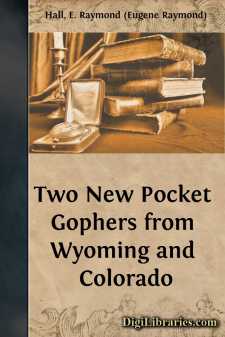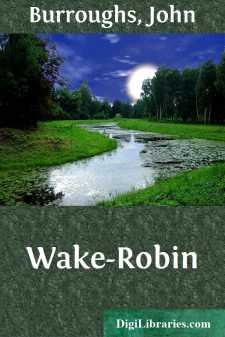Nature
Nature Books
Sort by:
by:
Jean-Henri Fabre
CHAPTER I: THE BLACK-BELLIED TARANTULA The Spider has a bad name: to most of us, she represents an odious, noxious animal, which every one hastens to crush under foot. Against this summary verdict the observer sets the beast’s industry, its talent as a weaver, its wiliness in the chase, its tragic nuptials and other characteristics of great interest. Yes, the Spider is well worth studying, apart...
more...
DEVELOPMENT OF THE DIGESTIVE CANAL OF THE AMERICAN ALLIGATOR By ALBERT M. REESE Professor of Zoology, West Virginia University In a previous paper () the writer described the general features in the development of the American Alligator; and in other papers special features were taken up in more detail.In the present paper the development of the enteron is described in detail, but the derivatives of...
more...
by:
Richard C. Fox
Information about osteological changes in the groups of reptiles that gave rise to mammals is preserved in the fossil record, but the musculature of these reptiles has been lost forever. Nevertheless, a reasonably accurate picture of the morphology and the spatial relationships of the muscles of many of these extinct vertebrates can be inferred by studying the scars or other marks delimiting the...
more...
IN preparing maps showing the geographic distribution of North American lagomorphs, some conflicting statements in the literature have led us to examine the pertinent specimens of the Florida cottontail and the Audubon cottontail with results as given below. The study here reported upon was aided by a contract between the Office of Naval Research, Department of the Navy, and the University of Kansas...
more...
In the academic year of 1947-48 Montague studied the geographic variation in Thomomys talpoides of Wyoming. His study was based upon materials then in the University of Kansas Museum of Natural History. Publication of the results was purposely delayed until previously reported specimens from certain adjacent areas, especially in Colorado, could be examined. In the autumn of 1950 one of us, Hall, was...
more...
by:
Carl Weschcke
Introduction GROWING NUTS IN THE NORTH Only a few books have been written on the subject of nut trees and their bearing habits, and very little of that material applies to their propagation in cold climates. For these reasons I am relating some of the experiences I have had in the last thirty-two years in raising nut trees in Wisconsin. To me, this has been a hobby with results both practical and...
more...
CHAPTER ONE HOW OUR FIRST ANCESTORS LIVED Before these fields were shorn and tilledFull to the brim our rivers flowed;The melody of waters filledThe fresh and boundless woods;And torrents dashed, and rivulets play'd,The fountains spouted in the shade. William Cullen Bryant,quoted in American Forestry, XIV. 520 The earth is our home. It is a great treasure house filled with the most wonderful...
more...
Preface. In the following pages I have endeavoured to give, in a series of picturesque sketches, a general view of the natural history as well as of the physical appearance of North and South America. I have first described the features of the country; then its vegetation; and next the wild men and the brute creatures which inhabit it. However, I have not been bound by any strict rule in that respect,...
more...
by:
John Burroughs
In coming before the public with a newly made edition of my writings, what can I say to my reader at this stage of our acquaintance that will lead to a better understanding between us? Probably nothing. We understand each other very well already. I have offered myself as his guide to certain matters out of doors, and to a few matters indoor, and he has accepted me upon my own terms, and has, on the...
more...
by:
John Burroughs
UNDERTHE MAPLESITHE FALLING LEAVESThe time of the falling of leaves has come again. Once more in our morning walk we tread upon carpets of gold and crimson, of brown and bronze, woven by the winds or the rains out of these delicate textures while we slept. How beautifully the leaves grow old! How full of light and color are their last days! There are exceptions, of course. The leaves of most of the...
more...











